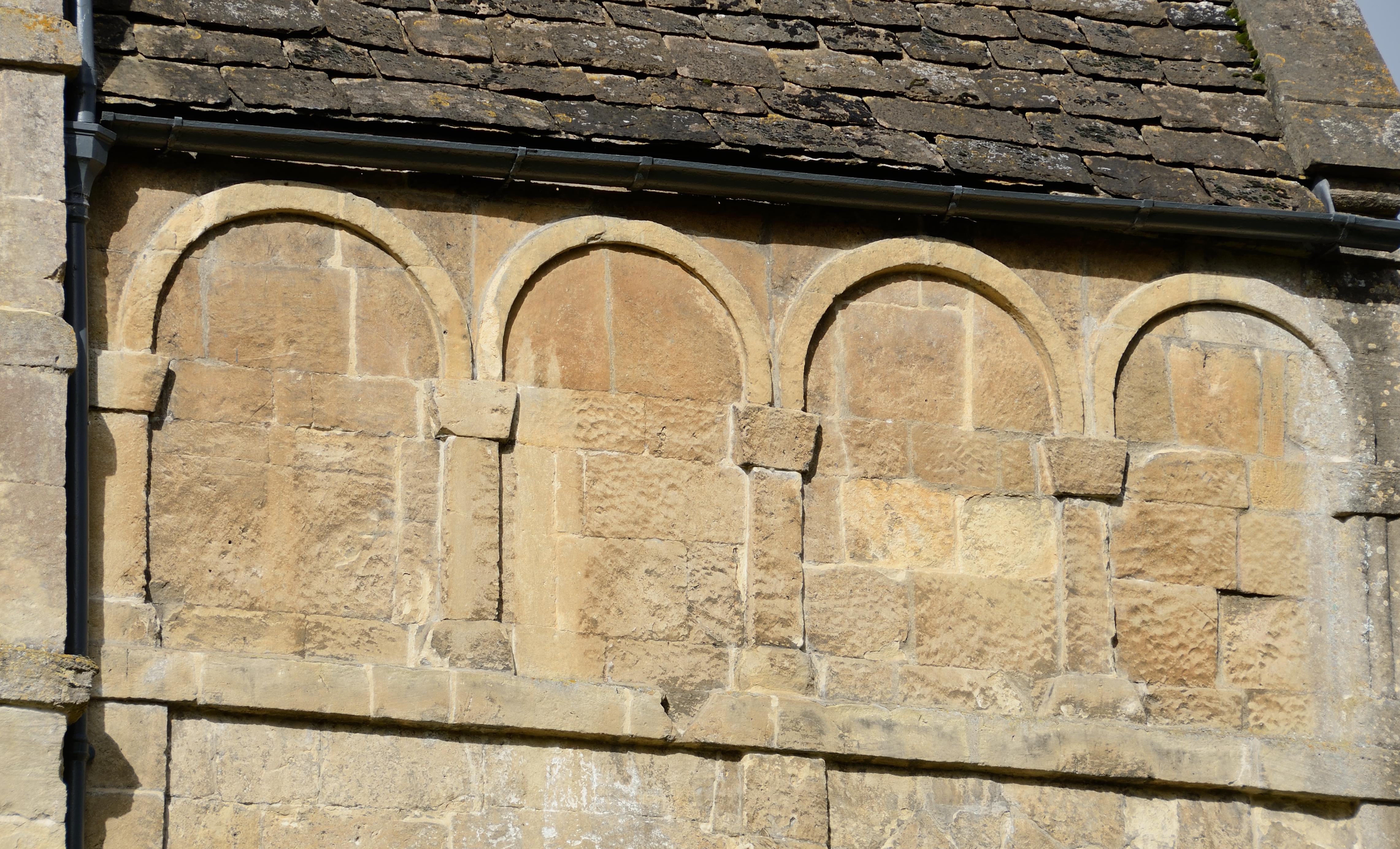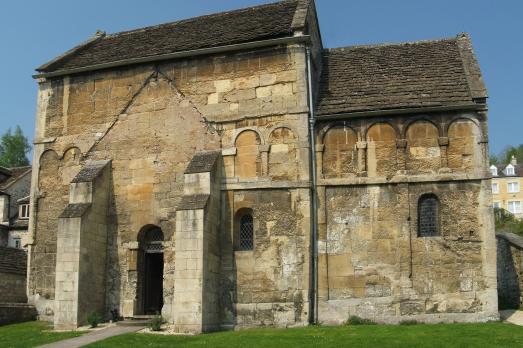The 12th century historian William of Malmesbury reports that it was standing in the 1120s, but he thought it dated back to the time of St Aldhelm who died in 709. A charter of King Æthelred granted Bradford to the nuns of Shaftesbury in 1001, and the church's architecture suggests it was built for the nuns early in the eleventh century. It is a characteristic Anglo Saxon building: tall and narrow with small windows. The extent and richness of its decoration, however, are rare, perhaps suggesting it was designed partly for the relics of Æthelred's brother, Edward the Martyr, which were housed with the nuns at Shaftesbury.
For centuries the Saxon church was effectively lost, being hidden behind buildings of various other establishments. It was used in 1715 as an ossuary and in the 1800s it became a free school for boys. The blackening of the nave walls from the kitchen fire can still be seen.
Repair work carried out in 1856 revealed two carved stone angels over what is now known to be the original chancel arch, and this led to its being recognised for what it was, namely a late Saxon building, by Canon WH Jones, a noted historian who was Vicar of Holy Trinity at the time. Canon Jones brought it to public attention and led the move for its restoration. Although Canon Jones later read William of Malmesbury's comments and decided that it may have been built much earlier by Aldhelm, it now seems more likely that Aldhelm's church would have stood somewhere on the site of the present Holy Trinity. Canon Jones’s description of the church can be read in a 1907 book, locally published, on the history of Bradford on Avon.




